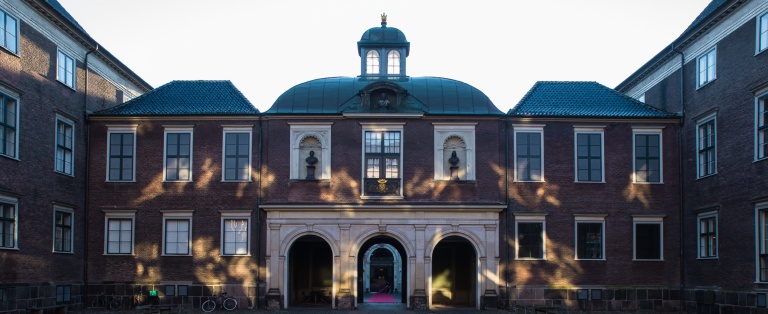Specialisation, not centralisation
The report recommends that all institutions of higher education in art in Denmark should be merged to form one or two central institutions with a joint professional and administrative management set-up. The idea is that this will better equip higher education in art to meet future challenges such as increasing demands for internationalisation, knowledge production, art mediation – and financial cuts within the field. According to this point of view, Danish higher education in art can be regarded as a single sector of education that would become more efficient and achieve a number of economies of scale by being centralised.
Rector of the Royal Danish Academy of Fine Arts’ Schools of Visual Arts, Sanne Kofod Olsen, disagrees with this conclusion.
“Centralising all Danish institutions of higher education within the arts would negatively impact quality within the individual spheres of education, and previous experience with such initiatives have proven them to be financially costly exercises that introduce new and expensive tiers of management. Even if the centralisation efforts were only to affect the administrative level, this would still have an adverse effect on the overall competencies and level of professional expertise found within visual arts education – the top management would be far removed from the school, and it is possible to imagine that this top management would not have specific professional insight into the field of visual arts, the education programmes and the core tasks performed at the institutions”, says Sanne Kofod Olsen.
Internationalisation, knowledge production and art mediation are all major focus areas at the Schools of Visual Arts. The Schools engage in fruitful collaboration with a range of foundations and universities to promote the production of new knowledge and research, and also co-operate with numerous museums and exhibition venues throughout Denmark on art mediation initiatives. This is the direction that should be taken when considering how to develop and evolve higher education in art: Focusing on specialisation and in-depth expertise within the various art forms and industries. This is the way to ensure that Denmark will continue to educate some of the best artists in the world.
Professional diversity
In the Danish national budget for 2017 (the Danish Finance Act), the sums allocated to the total field of music are more than five times greater than the funds set aside for the Schools of Visual Arts. If Denmark were to have just one or two institutions of higher education in art, the Schools of Visual Arts and other smaller-scale art disciplines would be greatly at risk of becoming subordinate sections within an institution largely devoted to music.
“The Schools of Visual Arts make up a small, highly specialised place of education and cultural institution that maintains high levels of education. It would be difficult to continue to nurture talent, to safeguard specialisation and to maintain close links to the professional Danish art scene if the Schools of Visual Arts were merged with other art forms to form a single administrative and partly interdisciplinary institution. The professional context of the Schools of Visual Arts is the art scene – in Denmark and internationally – and this is where we engage in professional exchanges and artistic development. Our educational programmes and institution must always be able to reflect the latest movements and tendencies – and contribute to them,” says rector Sanne Kofod Olsen.
Questionable process
The report’s recommendations and conclusions do not reflect the feedback provided to Henrik Sveidahl by the Schools of Visual Arts. Indeed, the process only involved the rector, professors and advisory board of the Schools of Visual Arts to a quite limited extent, and much of what was said has not been incorporated into the report.
“It is regrettable that individual specialist fields and settings have not been taken seriously while preparing this report,” says Sanne Kofod Olsen, “and as a result, we at the Schools of Visual Arts and many other stakeholders on the Danish art scene (artists, galleries, museum directors and more) are all very surprised at the report’s conclusions.”
Please direct all inquires to communications officer Lea Kyndrup, tel. (+45) 33 74 46 16,
News
Proposal for centralised national art education will weaken core fields of professional expertise
The Royal Danish Academy of Fine Arts welcomes the recommendations put forward by rector Henrik Sveidahl concerning the future organisation of art education in Denmark. Sveidahl’s report addresses the need to consider new perspectives – a need driven by the art educations’ financial difficulties. But the institutional centralisation recommended in the report is not the right road to pursue if you wish to safeguard the high level of professional competencies found within art educations in Denmark today.
